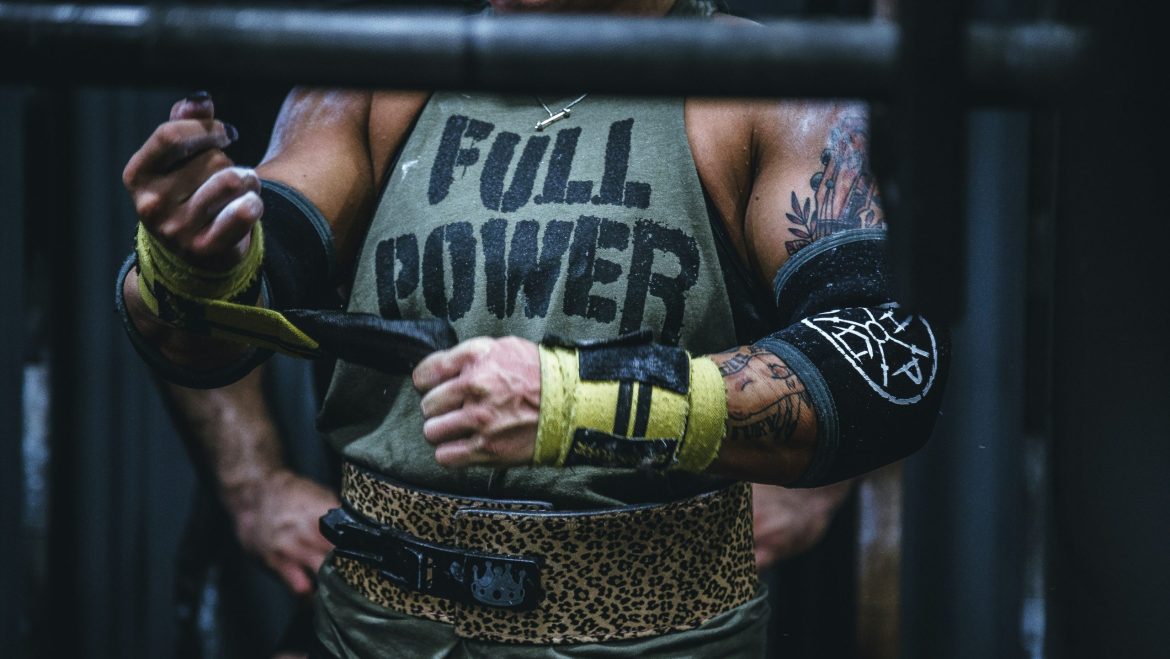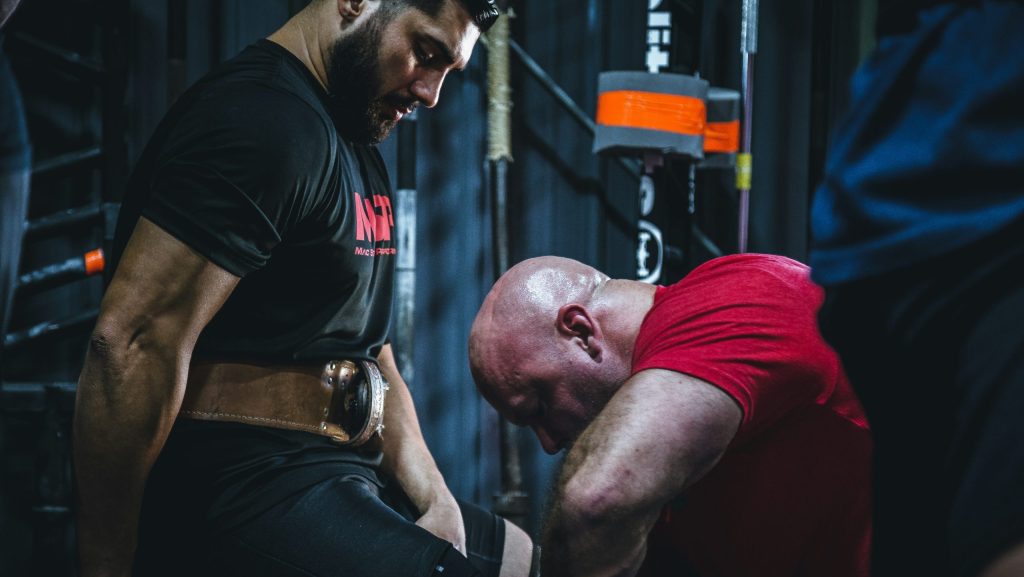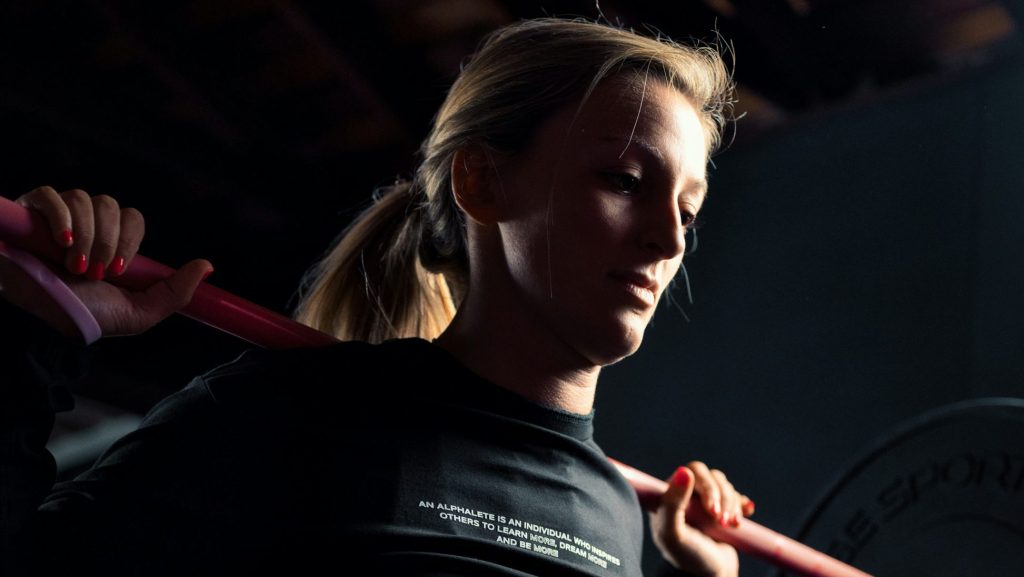Squats are a fundamental exercise targeting multiple muscle groups, effective for building strength, flexibility, and endurance. However, their simplicity often leads to incorrect execution by beginners, affecting the workout’s effectiveness and increasing the risk of injuries. Correcting these common mistakes is crucial for enhancing the exercise’s benefits and ensuring safety.
Interesting Fact: “Incorporating squats into your workout routine can increase your lower body strength by up to 50% faster than other exercises, making it a powerhouse move for both endurance and muscle growth.”
Essential Topics for Enhancing Squatting Practice:
- Understanding Proper Squat Form: Focuses on the importance of correct posture, alignment, and depth in squats.
- Common Squatting Mistakes: Identifies frequent errors in squatting and provides solutions to correct them.
- Squat Variations for Beginners: Introduces different squat variations suitable for beginners to keep workouts engaging and effective.
- The Role of Equipment in Squatting: Discusses how equipment can be used to improve squatting technique and ensure safety.
- Incorporating Squats into Your Routine: Gives advice on how to effectively add squats to fitness routines, considering frequency and progression.
Correcting common squatting mistakes is crucial for achieving a more effective and safer workout. This article aims to provide beginners with the knowledge and techniques to perform squats correctly, enabling them to enjoy the full benefits of this comprehensive exercise. It emphasizes the importance of proper form, technique, and gradual progression in mastering squats.
Understanding Proper Squat Form
Squats are a critical exercise for building strength, flexibility, and endurance, targeting multiple muscle groups. Proper execution requires attention to posture, foot positioning, and squat depth, each vital for maximizing benefits and minimizing injury risks. This section delves into these components, ensuring readers understand how to perform squats correctly.
Posture and Alignment
Achieving proper squat posture and alignment is essential for effective exercise execution. A straight back and aligned spine distribute weight evenly, preventing lower back stress. Stand with feet shoulder-width apart, toes pointed outwards slightly. Engage your core, keep your chest lifted, and look straight ahead. Ensure knees align with toes without extending past your feet during the squat, protecting your knees and engaging the correct muscles.
Foot Positioning
Foot placement significantly affects squat balance, muscle engagement, and exercise effectiveness. Position feet shoulder-width apart or a bit wider, turning toes out slightly for stability and depth. Adjust foot positioning for comfort, maintaining proper form. The optimal position varies, influenced by individual flexibility, limb length, and strength.
Interesting Fact: “Proper squat depth, where thighs are parallel to the floor, can activate your leg muscles up to 3 times more than partial squats, significantly enhancing strength and muscle growth.”
Depth of the Squat
- Parallel Depth: Maximally engages quadriceps, hamstrings, and glutes.
- Below Parallel: Further activates the gluteus maximus, promoting growth.
- Above Parallel: Primarily focuses on quadriceps, with reduced hamstring and glute engagement.
Lowering until thighs are at least parallel to the floor ensures hips drop below knees, engaging glutes and hamstrings alongside quadriceps. Work within your flexibility and strength limits, gradually deepening squats as capability improves.
Squats, when performed with correct form, posture, and depth, serve as an efficient exercise for strengthening and enhancing fitness. Attention to these details ensures workout effectiveness, safety, and progression in physical fitness. Incorporating proper techniques into your routine significantly benefits overall strength and muscle development.
Common Squatting Mistakes
Incorporating squats into a workout regimen strengthens and enhances flexibility but common errors can hinder progress and increase injury risks. Identifying and correcting these faults optimizes squat effectiveness and safety. This section examines prevalent squatting mistakes, with strategies to avoid them, improving squat technique.
Knee Placement Errors
Incorrect knee placement, often resulting in undue stress on knee joints, is a frequent squatting mistake. Proper knee trajectory varies, depending on individual differences like limb length and flexibility, but generally, knees should align over the feet, moving naturally forward while the heels stay grounded.
Interesting Fact: “Correcting improper weight distribution in squats can increase the activation of gluteal muscles by up to 25%, enhancing lower body strength and stability.”
Improper Weight Distribution
Correct weight distribution is crucial for a balanced and effective squat, with common errors including shifting weight towards the toes. This practice can compromise balance and diminish posterior chain muscle engagement. The focus should be on maintaining weight on the heels to mid-foot, ensuring optimal muscle recruitment and joint protection.
| Weight Distribution Error | Impact on Squat | Corrective Tip |
|---|---|---|
| Weight on Toes | Reduced glute and hamstring engagement, increased knee stress | Shift weight to heels, practice with unloaded squats |
| Excessive Forward Lean | Increases lower back strain | Focus on keeping chest up and core engaged |
| Uneven Distribution | Can lead to imbalance and potential injury | Ensure feet are evenly placed and grounded |
Neglecting Core Engagement
The core’s role in stabilizing the torso and maintaining proper posture during squats is often underestimated. A strong, activated core is essential, preventing excessive lumbar flexion or hyperextension, which can lead to discomfort and diminished exercise effectiveness.
Addressing common squatting mistakes by focusing on accurate knee placement, proper weight distribution, and core engagement refines squat form, reduces injury risk, and improves overall fitness. Incorporating these corrections into squatting practices can significantly enhance exercise benefits.
Squat Variations for Beginners
Squat variations are crucial for an engaging and effective workout regimen, especially tailored for beginners. These variations cater to different muscle groups and adapt to various fitness levels and goals. This section introduces beginner-friendly squat variations, providing detailed instructions on safely incorporating and proficiently performing these exercises.
Bodyweight Squats
Bodyweight squats are foundational, focusing on form and posture without additional weights. Perfecting the bodyweight squat is pivotal for beginners prior to moving onto more complex variations. Key aspects include maintaining a straight back, engaging the core, and positioning feet shoulder-width apart with toes slightly outward. Lower your body, keeping knees in line with toes, aiming for thighs parallel to the ground. Consistent practice of this variation develops strength and enhances squatting form.
Box Squats
Box squats aid beginners in mastering squat depth and maintaining correct posture. Squatting to a predetermined height, such as a box or bench, ensures consistent depth while supporting the development of posterior chain muscles. This variation is instrumental in learning to control the squat motion, providing a safe method to progress in squat depth as flexibility and strength increase.
Interesting Fact: “Goblet squats not only improve lower body strength and stability but also significantly enhance upper body and core engagement due to the front-loaded position of the weight.”
Goblet Squats
Goblet squats introduce weighted squats to beginners, focusing on stability and core engagement. Holding a weight like a kettlebell or dumbbell near the chest teaches balance and even weight distribution during the squat.
- Enhanced Core Stability: Engages the core throughout the squat for increased strength.
- Improved Posture: Encourages an upright posture, minimizing the risk of injury.
- Increased Depth and Flexibility: Facilitates a deeper squat, improving hip flexibility over time.
This variation is suitable for beginners ready to advance from bodyweight squats, aiming to strengthen the lower body and core comprehensively.
Exploring squat variations enriches the training experience, ensuring a holistic approach to lower body conditioning. Beginners are advised to initiate their squatting journey with foundational exercises like bodyweight, box, and goblet squats, gradually incorporating these practices to boost strength, flexibility, and overall fitness. Experimenting with these exercises will help identify the most beneficial and enjoyable variations for individual fitness paths, fostering continuous progress and engagement.
The Role of Equipment in Squatting
The incorporation of specific equipment in squat exercises significantly enhances technique, safety, and effectiveness. Key pieces of equipment such as squat racks, resistance bands, and appropriate footwear are essential for anyone looking to optimize their squatting routine. This section outlines the critical role of each equipment type in squatting, emphasizing their benefits and proper usage.
Squat Racks
Squat racks are invaluable for safely performing squats, especially when using heavy weights. They ensure a safe lifting environment by providing a mechanism to catch the barbell if the lifter is unable to complete a lift.
| Feature | Benefit | Consideration |
|---|---|---|
| Adjustable Height | Accommodates various exercises and user heights | Ensure correct setup for safety |
| Safety Bars | Provides a catch mechanism for failed lifts | Adjust to appropriate height |
| Versatility | Suitable for squats, presses, and more | Maximizes equipment utility |
Proper setup and use of a squat rack are paramount to ensure safety during squats. Adjusting the rack and safety bars to the correct height before lifting is essential to prevent injury and maximize the effectiveness of your workout.
Resistance Bands
Resistance bands are a versatile tool that can improve squat form, increase resistance, and target specific muscle groups more effectively. By adding bands to squats, lifters can create additional tension, making the exercise more challenging and beneficial.
Interesting Fact: “Weightlifting shoes can increase squat performance by up to 10% due to their raised heel design, which improves squat depth and posture.”
Incorporating resistance bands into squats can activate the glute and hip muscles more efficiently, contributing to a stronger and more defined lower body. They are particularly useful for correcting form, such as encouraging proper knee alignment by placing bands above the knees.
Proper Footwear
Selecting the right footwear is critical for achieving optimal squat performance and safety. Shoes with a flat, solid base or specialized weightlifting shoes provide the stability and support needed for effective squatting.
Footwear designed for squatting can enhance posture and alignment, allowing for a more natural weight distribution through the feet. This leads to improved balance and control, significantly reducing the risk of injury and ensuring a more effective squat.
Integrating the right equipment into your squat routine enhances performance and ensures safety. Squat racks, resistance bands, and the correct footwear are foundational to a successful squatting practice, each contributing to improved technique and a safer workout environment. Utilizing these tools effectively can support your goals and foster continued improvement and engagement in squatting.
Understanding Proper Squat Form
Successfully integrating squats into your fitness regimen is key to building strength, enhancing flexibility, and improving overall health. This involves a careful balance of exercise frequency, volume, progression, and sufficient recovery to achieve optimal results without the risk of overtraining or injury.
Frequency and Volume
Setting the right frequency and volume for squat exercises is crucial, especially for beginners. Here’s a guideline to get started:
- Begin with 2-3 sessions per week: Allows for muscle adaptation and recovery.
- Start with 2-3 sets of 8-12 reps: Offers a foundation for beginners to build upon.
- Gradually increase volume or intensity: As strength and endurance improve, incrementally add more sets, reps, or weight to continue progress.
Balancing squat frequency and volume ensures a gradual increase in exercise intensity, supporting muscle growth and endurance without overwhelming the body.
Progressive Overload
Interesting Fact: “Incorporating varied squat exercises can lead to a 35% increase in lower body strength over 8 weeks, significantly more than routines without squat variations.”
Progressive overload is essential for advancing in your squat routine. This involves methodically increasing the weight, volume, or intensity of squats to challenge your muscles continually. By systematically escalating the demands on your body, you ensure ongoing strength gains and performance improvements. This principle is fundamental for overcoming plateaus and fostering long-term fitness progression.
Recovery and Rest
Adequate recovery and rest are paramount in any squatting regimen. Rest days are critical after intense or high-volume squat sessions, providing muscles the necessary time to repair and grow stronger. Incorporating active recovery techniques, such as stretching and foam rolling, can further enhance muscle recuperation and flexibility, preparing you for your next squat session more effectively.
By thoughtfully incorporating squats into your workout routine, considering frequency, volume, progression, and recovery, you set a solid foundation for continuous improvement in strength, endurance, and overall fitness. Continually adjust your squat regimen to align with your evolving fitness goals, ensuring sustained progress and maximizing the benefits of this versatile exercise.
Conclusion: Squatting 3 Things Youve Been Doing Wrong All Along
The comprehensive exploration of squatting techniques and strategies underscores the indispensable role of squats in a balanced fitness regimen. From the nuances of proper form to the strategic integration of squats into your routine, each aspect contributes significantly to enhancing fitness outcomes.
“Start implementing these strategies today to build strength, improve flexibility, and enhance your overall well-being.”
Squats are not merely a physical exercise; they are a fundamental element of a holistic approach to health and fitness. By focusing on the key areas outlined, individuals can harness the full potential of squats, ensuring a safe, effective, and progressive workout regimen.
Key Insights Summary:
- Proper Squat Form: The cornerstone of effective squatting, emphasizing posture, alignment, and depth.
- Correcting Common Mistakes: Crucial for enhancing squat technique and preventing potential injuries.
- Squat Variations: Introduces diversity into routines, targeting different muscle groups for a comprehensive workout.
- Utilizing Equipment: Squat racks, resistance bands, and proper footwear play pivotal roles in maximizing squat safety and efficiency.
- Routine Integration: A strategic approach to incorporating squats, balancing frequency, volume, and progression, underpinned by adequate recovery.
Incorporating squats into a workout routine transcends mere exercise; it’s a commitment to a continuous fitness evolution. Adherence to principles of form, improvement, and strategic planning facilitates unlocking squats’ full benefits. As you refine your squat technique and integrate these exercises into your routine, you edge closer to your fitness objectives, leveraging squats for strength, flexibility, and overall health.
Citations:
- You’re probably squatting wrong, according to Ellie Goulding’s personal trainer, Business Insider
- 11 Mistakes You Make During Deadlifts That Can Lead to Back Pain, Men’s Health
- Knee Pain When Squatting? Three Common Fixes, Springloaded
- Lower Back Pain From Squats? Do THIS, Precision Movement


